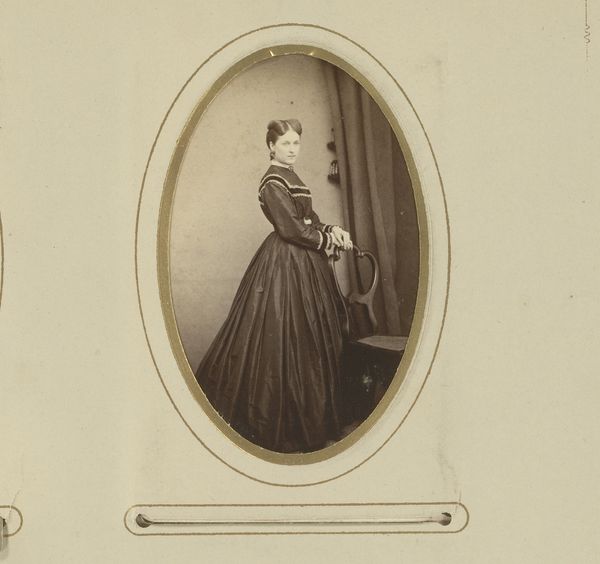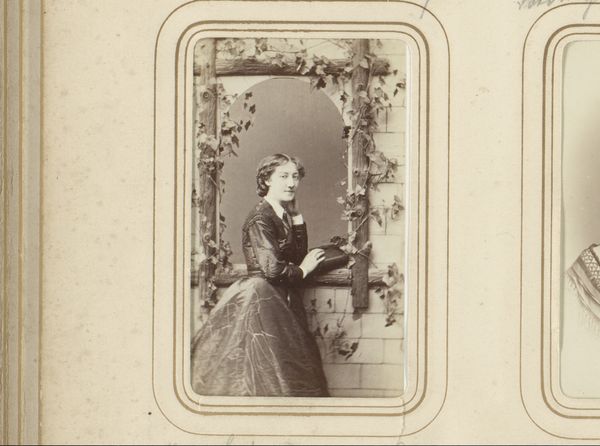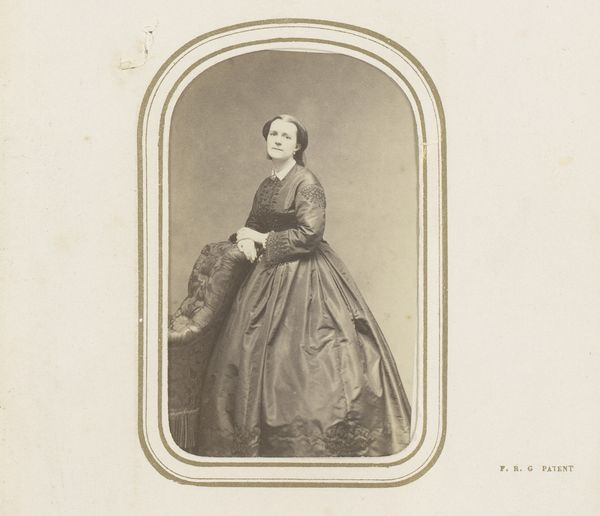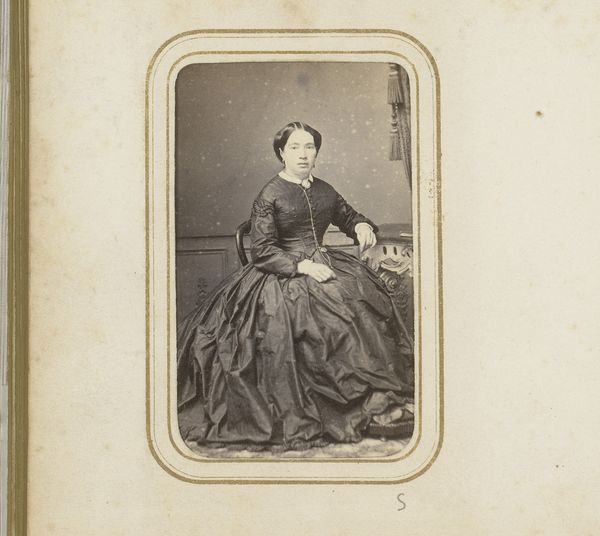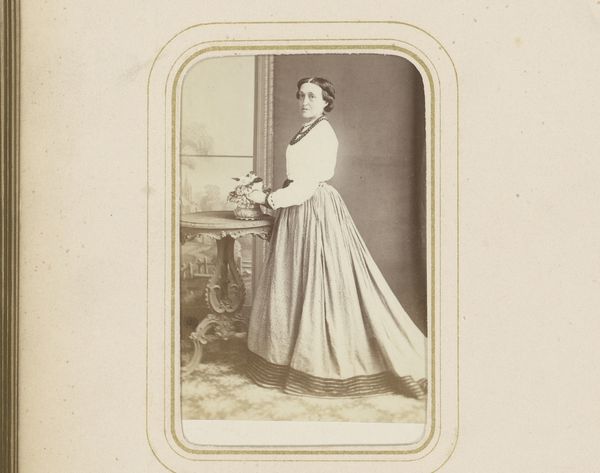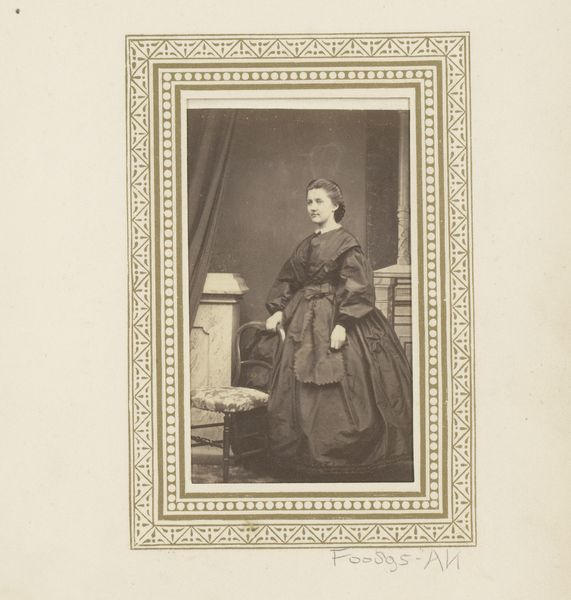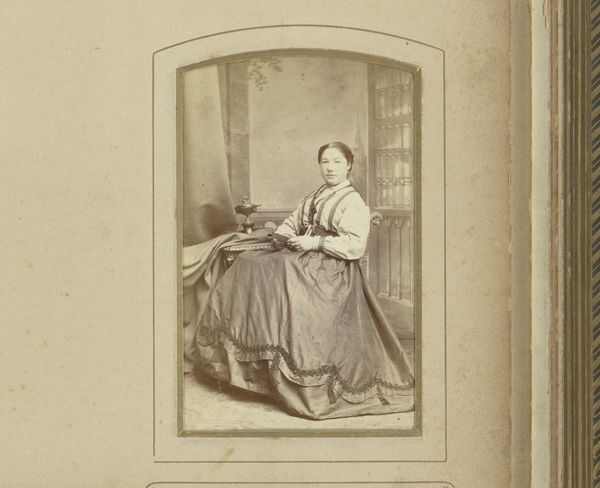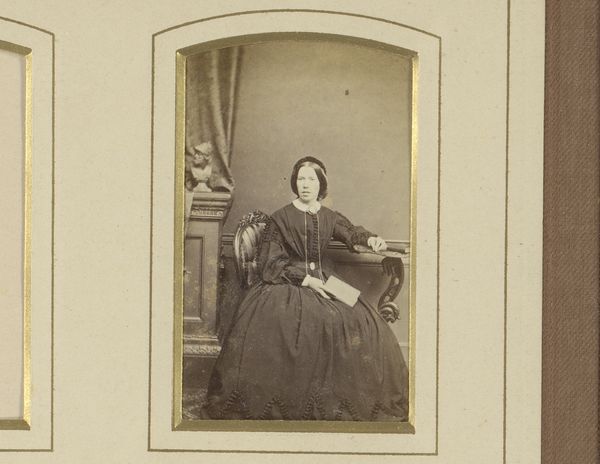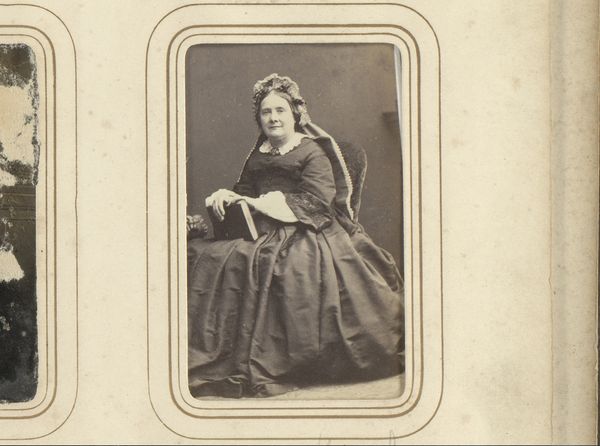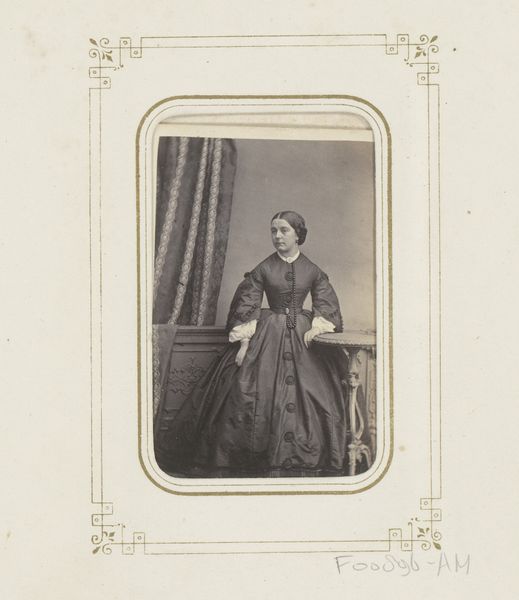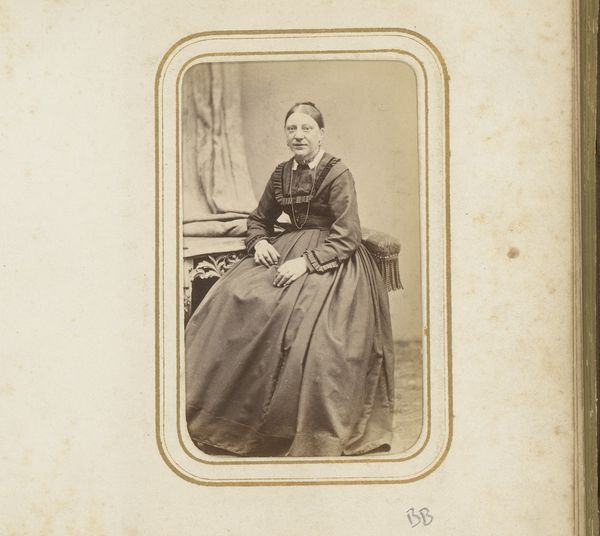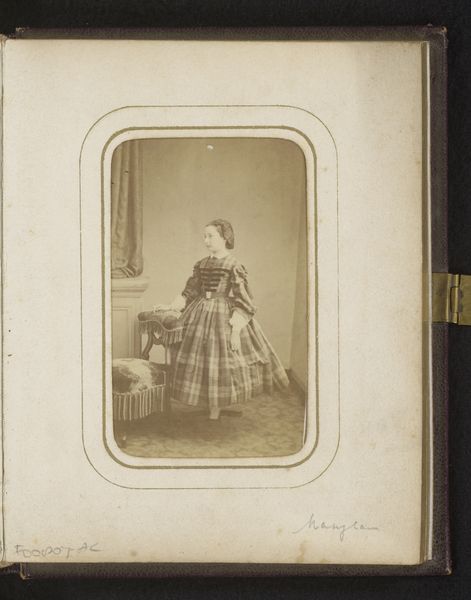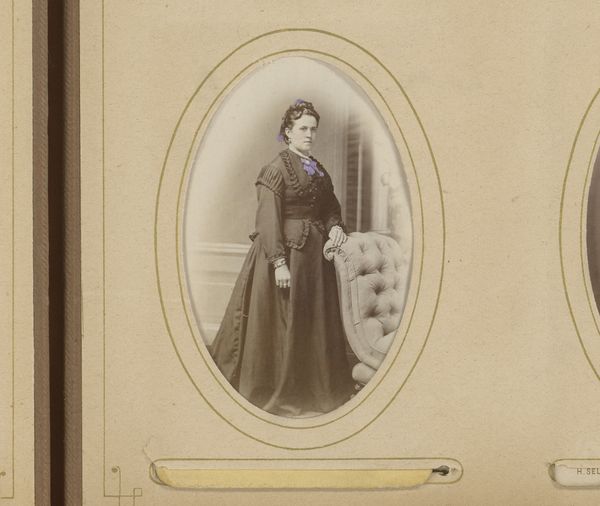
Dimensions: height 85 mm, width 53 mm
Copyright: Rijks Museum: Open Domain
Editor: This daguerreotype, taken by Maurits Verveer between 1859 and 1861, is a portrait of Geertruyda Bosboom-Toussaint, currently housed at the Rijksmuseum. It’s quite striking; the subdued lighting really emphasizes the texture of her dress and the book she holds. What stands out to you about this piece? Curator: Well, let's consider the materials themselves. The daguerreotype process was painstaking, relying on silver-plated copper, mercury vapor, and meticulous preparation. This contrasts sharply with modern digital photography. What was the social impact of such labor-intensive technology on portraiture at this time? Editor: I hadn't really considered the labor involved. I guess having your portrait taken was a much bigger deal back then, quite different from a quick phone snap. Curator: Exactly. It speaks volumes about class and accessibility. A daguerreotype was a significant investment. What kind of statement was Geertruyda making by having this portrait done? Furthermore, examine the book, a signifier of literacy and perhaps a pointed emblem of cultural and class status? Editor: That's interesting! It makes me wonder what the book actually was. Also, there’s the backdrop curtain and her dress - those fabrics must have taken considerable skill and labor to produce as well, representing another aspect of materiality and cost. Curator: Precisely. Consider the supply chains involved. The extraction of the silver, the weaving of the fabric...It encourages us to see her as a participant in a complex web of material production and consumption. What do you think, looking at this with an eye toward material analysis changes how you view it? Editor: Absolutely. It gives the portrait a completely new dimension, almost like a record of the economics of the time. It makes it much more tangible than just an image of a person. Curator: And remember, it challenges traditional art history, shifting the focus from pure aesthetics to the nitty-gritty of making and consuming. This approach helps to unravel the social values.
Comments
No comments
Be the first to comment and join the conversation on the ultimate creative platform.

